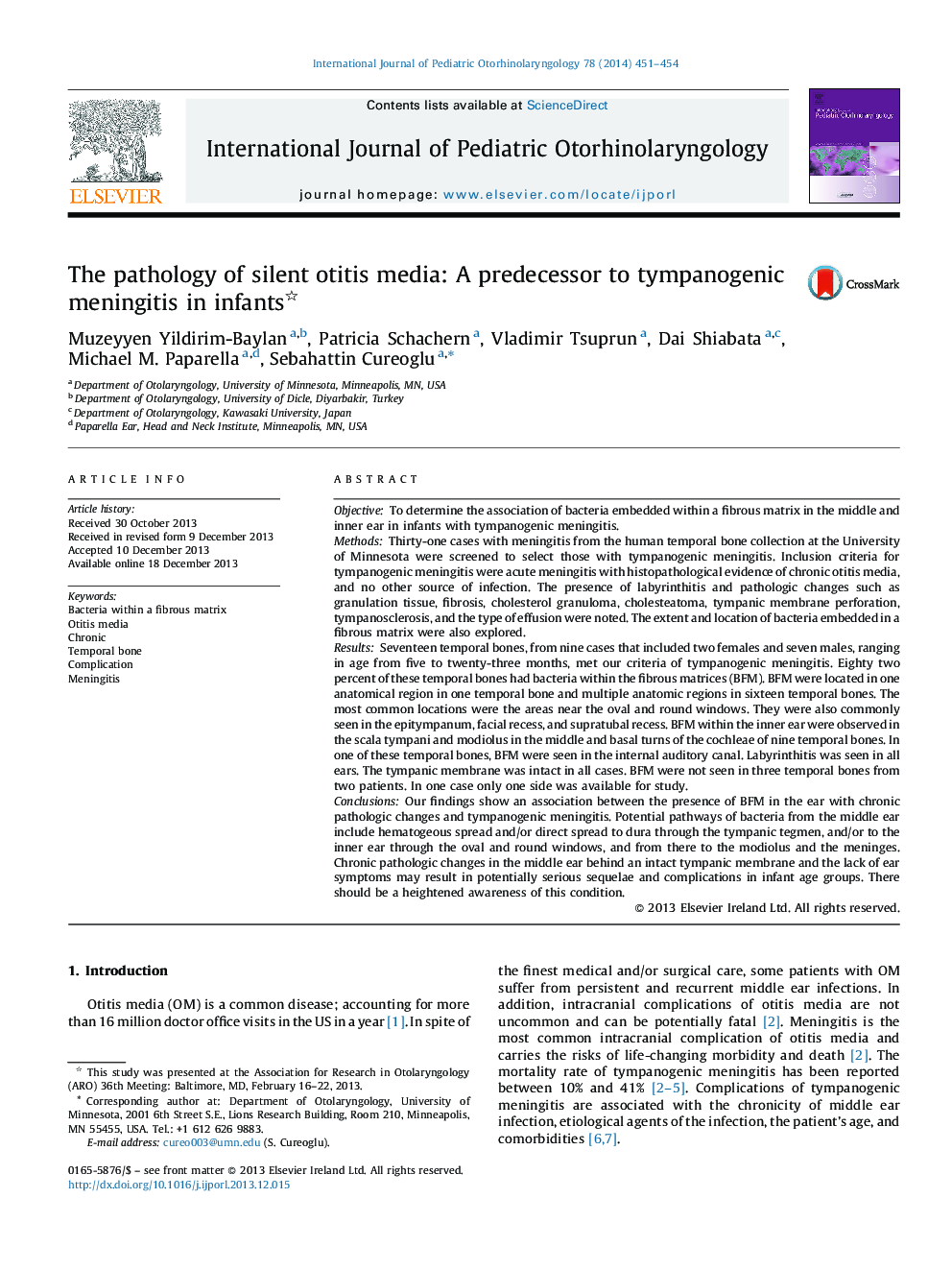| Article ID | Journal | Published Year | Pages | File Type |
|---|---|---|---|---|
| 4112131 | International Journal of Pediatric Otorhinolaryngology | 2014 | 4 Pages |
ObjectiveTo determine the association of bacteria embedded within a fibrous matrix in the middle and inner ear in infants with tympanogenic meningitis.MethodsThirty-one cases with meningitis from the human temporal bone collection at the University of Minnesota were screened to select those with tympanogenic meningitis. Inclusion criteria for tympanogenic meningitis were acute meningitis with histopathological evidence of chronic otitis media, and no other source of infection. The presence of labyrinthitis and pathologic changes such as granulation tissue, fibrosis, cholesterol granuloma, cholesteatoma, tympanic membrane perforation, tympanosclerosis, and the type of effusion were noted. The extent and location of bacteria embedded in a fibrous matrix were also explored.ResultsSeventeen temporal bones, from nine cases that included two females and seven males, ranging in age from five to twenty-three months, met our criteria of tympanogenic meningitis. Eighty two percent of these temporal bones had bacteria within the fibrous matrices (BFM). BFM were located in one anatomical region in one temporal bone and multiple anatomic regions in sixteen temporal bones. The most common locations were the areas near the oval and round windows. They were also commonly seen in the epitympanum, facial recess, and supratubal recess. BFM within the inner ear were observed in the scala tympani and modiolus in the middle and basal turns of the cochleae of nine temporal bones. In one of these temporal bones, BFM were seen in the internal auditory canal. Labyrinthitis was seen in all ears. The tympanic membrane was intact in all cases. BFM were not seen in three temporal bones from two patients. In one case only one side was available for study.ConclusionsOur findings show an association between the presence of BFM in the ear with chronic pathologic changes and tympanogenic meningitis. Potential pathways of bacteria from the middle ear include hematogeous spread and/or direct spread to dura through the tympanic tegmen, and/or to the inner ear through the oval and round windows, and from there to the modiolus and the meninges. Chronic pathologic changes in the middle ear behind an intact tympanic membrane and the lack of ear symptoms may result in potentially serious sequelae and complications in infant age groups. There should be a heightened awareness of this condition.
